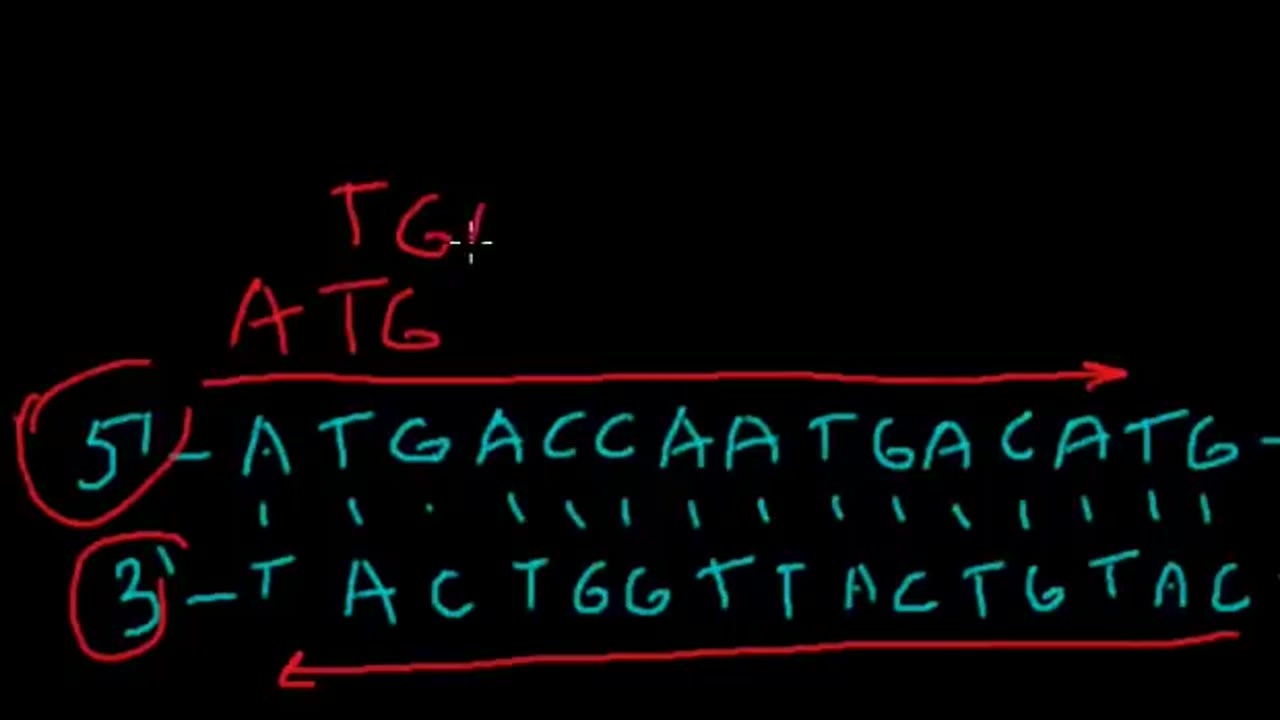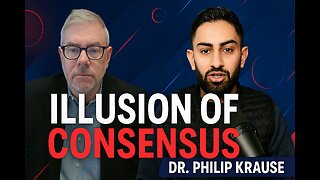Premium Only Content

Open reading frames DNA
In molecular genetics, an open reading frame (ORF) is the part of a reading frame that contains no stop codons. The transcription termination pause site is located after the ORF, beyond the translation stop codon, because if transcription were to cease before the stop codon, an incomplete protein would be made during translation.
Normally, inserts which interrupt the reading frame of a subsequent region after the start codon cause frameshift mutation of the sequence and dislocate the sequences for stop codons.
One common use of open reading frames is as one piece of evidence to assist in gene prediction. Long ORFs are often used, along with other evidence, to initially identify candidate protein coding regions in a DNA sequence. The presence of an ORF does not necessarily mean that the region is ever translated. For example in a randomly generated DNA sequence with an equal percentage of each nucleotide, a stop-codon would be expected once every 21 codons. A simple gene prediction algorithm for prokaryotes might look for a start codon followed by an open reading frame that is long enough to encode a typical protein, where the codon usage of that region matches the frequency characteristic for the given organism's coding regions. By itself even a long open reading frame is not conclusive evidence for the presence of a gene.
-
 LIVE
LIVE
AdmiralSmoothrod
5 hours agoark ascended - its dino time again
68 watching -
 2:08:21
2:08:21
The Illusion of Consensus
9 days agoFormer FDA Official Dr. Philip Krause On White House Pressure To Approve Covid Vaccines at the FDA
43.3K34 -
![[Sabatoge Saturday] Monster Hunter Wilds - w/ Dio!!](https://1a-1791.com/video/fww1/9d/s8/1/5/g/F/z/5gFzy.0kob-small-Sabatoge-Saturday-Monster-H.jpg) LIVE
LIVE
CHiLi XDD
3 hours ago[Sabatoge Saturday] Monster Hunter Wilds - w/ Dio!!
38 watching -
 LIVE
LIVE
RyuMuramasa✧
2 hours agoBlade of Vengeance | The First Berserker: Khazan | LIVE Playthrough!
80 watching -
 1:50:26
1:50:26
Darkhorse Podcast
9 hours agoThere’s a New Tariff In Town: The 271st Evolutionary Lens with Bret Weinstein and Heather Heying
49.5K39 -
 29:36
29:36
The Brett Cooper Show
3 days ago $4.82 earnedThe Non-Binary Samurai Game No One Wanted | Episode 19
46.9K39 -
 4:25:56
4:25:56
GamerGril
7 hours agoFistful of GrilCheese 🤠 How The West Was Won 🤠
22K -
 LIVE
LIVE
Akagumo
12 hours ago🔴 LIVE - AKAGUMO - SPECTACULAR SATURDAY! #12 - WARZONE VERDANSK RETURNS
70 watching -
 LIVE
LIVE
Phyxicx
6 hours agoHalo on a Saturday! - 4/5/2025
88 watching -
 16:46
16:46
Stephen Gardner
10 hours agoJudge Boasberg THREATENS to ARREST Trump White House leaders!
54K243